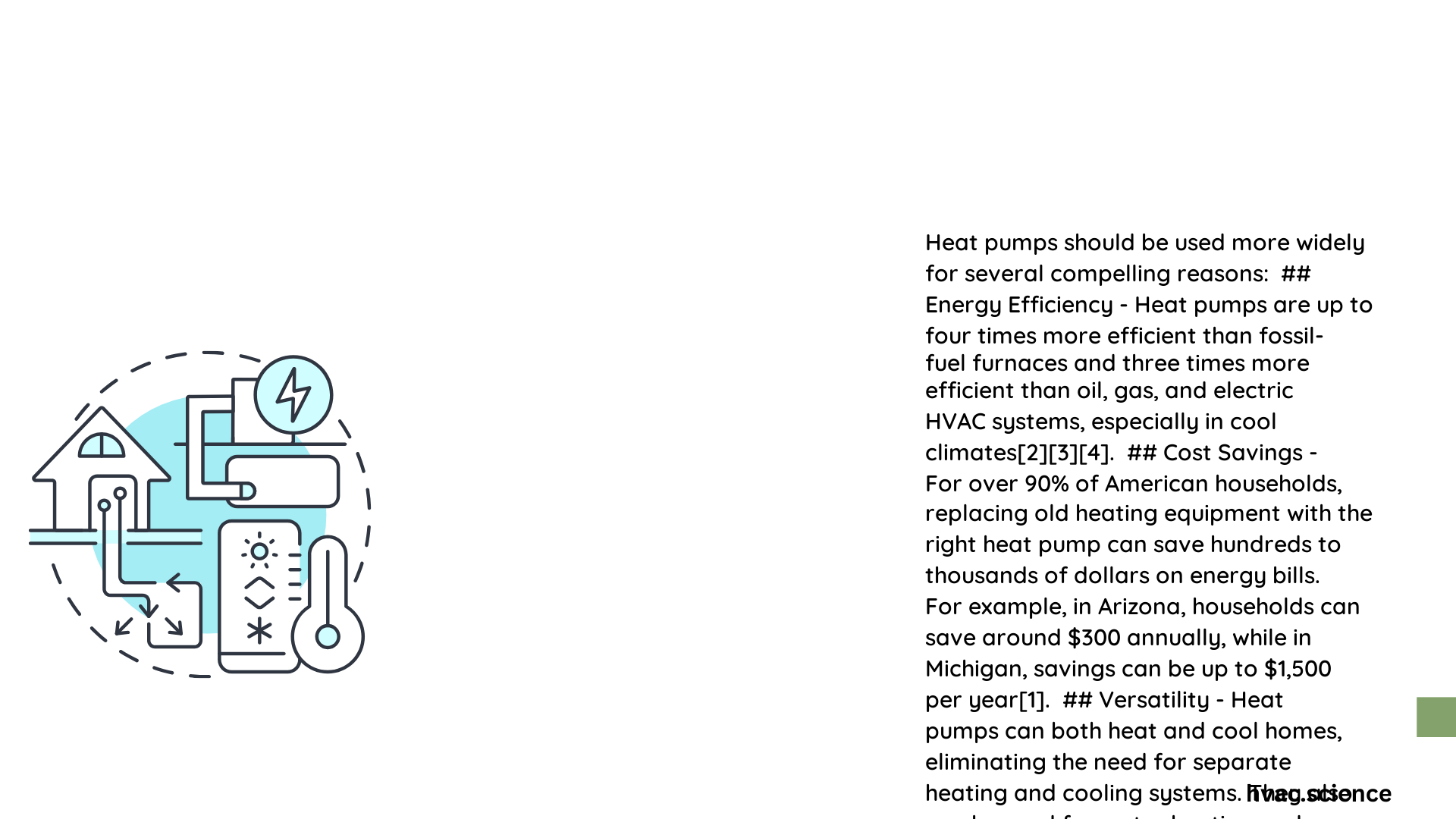Heat pumps represent a transformative energy technology capable of dramatically reducing carbon emissions and improving residential and commercial energy efficiency. Their potential for widespread adoption depends on specific performance conditions, economic factors, and technological advancements that make them increasingly attractive across diverse climate zones and application scenarios.
What Makes Heat Pumps Viable for Widespread Use?
How Do Temperature Ranges Impact Heat Pump Performance?
Heat pump efficiency is heavily influenced by ambient temperature conditions. Key performance considerations include:
- Mild Climate Performance:
- Optimal efficiency in temperatures between 35°F and 55°F
- Consistent COP (Coefficient of Performance) of 3.0 or higher
-
Reduced energy consumption compared to traditional heating systems
-
Cold Climate Adaptations:
| Temperature Range | Performance Impact | Efficiency Modification |
|——————|———————|————————-|
| 35°F – 45°F | Moderate Efficiency | Low-load efficient models |
| 45°F – 55°F | High Efficiency | Standard heat pump configurations |
| Below 35°F | Reduced Performance | Advanced cold-climate heat pumps required |
What Economic Factors Influence Heat Pump Adoption?
Installation Cost Considerations
The economic viability of heat pumps depends on several financial factors:
- Initial Investment
- Average installation cost: $3,000 – $10,000
- Equipment expenses: $2,000 – $7,000
-
Labor costs: $1,000 – $3,000
-
Financial Incentives
- Federal tax credits up to 30% of installation costs
- State and utility rebate programs
- Potential long-term energy savings
How Can Maintenance Optimize Heat Pump Efficiency?
Critical maintenance strategies include:
- Regular filter replacement every 1-3 months
- Annual professional refrigerant level inspections
- Monitoring defrost cycle functionality
- Implementing smart thermostat technologies
What Are the Environmental Benefits?
Heat pumps offer significant environmental advantages:
- Potential CO2 emissions reduction up to 50%
- Lower reliance on fossil fuel-based heating
- Improved energy transfer efficiency
- Reduced carbon footprint compared to traditional heating systems
What Technical Specifications Ensure Widespread Usability?
Key technical requirements for widespread heat pump adoption:
- Minimum COP of 3.0
- Seasonal Performance Factor (SPF) above 2.5
- Adaptability to various climate conditions
- Low-load efficient (LLE) design capabilities
What Future Innovations Will Drive Adoption?
Emerging technologies and improvements include:
- Enhanced refrigerant compositions
- Advanced compressor designs
- Improved heat exchanger efficiency
- Integration with smart home systems
Conclusion

Heat pumps should be used more widely if they continue to demonstrate high efficiency, receive economic incentives, and adapt to diverse environmental conditions. Ongoing technological advancements and increasing environmental awareness will likely accelerate their adoption.
